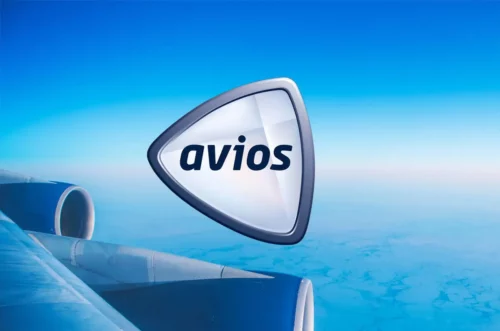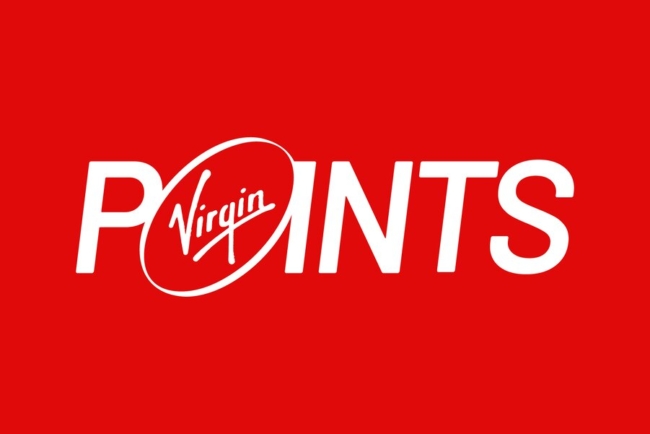Is ‘wait and see’ a better points strategy than ‘earn and burn’?
Links on Head for Points may support the site by paying a commission. See here for all partner links.
Is ‘earning and burning’ the best strategy for your hotel points and airline miles? There is a common view that it is, but it isn’t one I agree with.
As it happens, four things lined up this week which made me think it was worth looking at this topic:
- a conversation I had at a press event, with someone who is very switched on but was still surprised how many Virgin Points I am sitting on (seven figures)
- preparing updates to our ‘What are your hotel points worth?’ articles, where we show you the average redemption value BUT also what you can get on a good day if you wait
- the fact that those articles will go out whilst I will be in Turkey on the best ‘pence per point’ Marriott Bonvoy redemption I have ever done (2p per point vs our 0.5p target) which used a balance it took me a few years to build
- an excellent article on this very topic published by US site Frequent Miler, which is the closest US site in tone and style to HfP

I’ll say in advance, with no shame, that the structure of this article is taken directly from the Frequent Miler article linked to above. There’s no point reinventing a very efficient wheel. Thanks Greg.
Is ‘earn and burn’ a bad idea?
There is a common view amongst many miles and points collectors that ‘earn and burn’ is the way to go.
I’ll define ‘earn and burn’ as spending your points as quickly as you earn them, so that your total balances do not build up over time. If you don’t, the logic goes, you’re at risk of devaluations.
Oddly, the same people don’t say ‘Don’t save your money, spend it as soon as you earn it’. This is despite the fact that inflation will eat away at the value of your money if you don’t. However, I don’t see anyone giving that advice and I doubt you’d listen if they did.
You want to save money for your future needs, perhaps unexpected future needs. Shouldn’t you treat your miles and points in the same way?
Bad stuff happens
I can’t argue that lots of bad stuff happens in the miles and points world:
- Three weeks ago there was a devaluation of Club Europe redemptions using Avios with no notice
- Just last month, Avios devalued redemptions on American Airlines, Alaska and LATAM. This followed devaluations on Cathay Pacific and Japan Airlines last year. All were done with no notice.
- In March 2024, Avios cut the transfer rate into Nectar points for the second time in 18 months
- In June, Virgin Atlantic devalued ANA business class rewards to Japan after earlier devaluing First Class rewards – both were done with no notice.
This is only what we’ve seen in the last six months from the two main UK airlines.

Looking at the hotel schemes, we have seen consistent unwelcome tweaks. A few years ago, Hilton moved its top price from 50,000 points to 95,000 points with no notice. It isn’t that long ago that the most expensive IHG redemption was 30,000 points – now it is 120,000 points.
Remember that it’s less than 18 months since Radisson Rewards trashed its reward scheme by moving to revenue-based pricing with no notice. Points which got you 0.33p of value and often 0.5p of value now get you a fixed 0.15p.
Even Hyatt, which is still the gold standard for a hotel scheme which holds its value, has introduced a new Category 8 and peak / off-peak pricing. These factors combined to lift their top price from 30,000 points to 45,000 points per night.
Hyatt (and Marriott before it dropped categories) are also adept at moving hotels into pricier reward categories without nominally changing the reward chart.
You can’t sugar coat the fact that the list above has some pretty bad stuff on it. I know from HfP comments that Radisson loyalists who saw the value of their points balances wiped out 18 months ago have not forgiven the company.
I’m not including the recent changes to Hotels.com Rewards on this list because they don’t impact the value of your EXISTING credit balance.

But good stuff happens too
It’s unfashionable to admit it – and we don’t want to give the people who run the programmes the idea that they have leeway to try some more bad stuff – but the list of new ‘good stuff’ that we’ve seen in recent years is arguably longer than the bad list.
If you weren’t sitting on a pile of points, you wouldn’t have been well positioned to take advantage of any of this:
- Avios introduced ‘Reward Flight Saver’ on long haul flights – whilst cash neutral for standard redemptions (you need more Avios but use less cash) it is a massive saving for anyone with a large Avios balance – who can book the ‘most Avios, least cash’ option – and using a British Airways American Express 2-4-1 voucher
- Both Avios and Virgin Flying Club introduced GUARANTEED reward availability on every flight. It’s hard to overstate what a big change this was, and it is still one which is unique to Avios partners and Virgin Atlantic. Redemptions may have been nominally cheaper in the past but the seats were not there at peak times – now they are.
- There has been a step change of the quality of premium airline seats, including Qsuite, Club Suite and the new Virgin Atlantic seats – your miles get you a better business class product now than they did five years ago
- Barclaycard launched its Avios credit cards, allowing you to earn an annual upgrade voucher for an Avios flight – and you can earn a second voucher each year by getting a Barclays Premier current account with Barclays Avios Rewards – which makes your Avios go further
- Virgin Atlantic joined SkyTeam, adding a huge number of new airline redemption partners
- The launch of Virgin Red added new redemption options, including good value Virgin Voyages cruises, the new box at The O2 in London and – soon – Virgin Hotels
- Qatar Airways adopted Avios, leading to a HUGE drop in the cost of getting to Asia and Australasia. BA wants 340,000 Avios to fly to Sydney on a peak date and the seats are never there anyway. Qatar Airways only wants 180,000 Avios return in Business Class, you can fly Qsuite, you can choose from six destinations in Australasia and availability (whilst it comes and goes) is often very good.
- Qatar Airways lets you redeem Avios for JetBlue flights on transatlantic routes (and of course US domestic routes too)
- Privilege Club Collection lets you redeem Avios for ‘experiences’ redemptions
- Finnair Plus lets you redeem Avios for Scandinavian hotels at exceptionally good rates
- Hilton has just brought 400 Small Luxury Hotels on board and is offering redemptions priced off their standard reward chart. You won’t pay more than 130,000 points per night even for (as an example) the all-inclusive villas at Hermitage Bay in Antigua or at Milaidhoo in the Maldives.
- Luxury hotel redemption options have improved massively – IHG has added Regent and Six Senses (the latter not fully integrated, I accept), Hyatt added Thompson, Mr & Mrs Smith and is buying The Standard, Hilton just added NoMad and Graduate Hotels as well as SLH
- The hotel companies have jumped heavily into ‘experiences’ – did you book Hilton’s amazing 125,000 points British Grand Prix VIP package this year?

You need to be ready when opportunity knocks
Clearly, over the long term, the value of your miles and points will decline. This is no different to the way that the value of your cash will decline though. I am still surprised every time that I realise a Twix is no longer 10p.
However, opportunities are always coming along and you need to be ready.
The only way to jump on deals that emerge is to either keep a stash of miles and points available in your preferred currencies, or to have points which transfer instantly (or in the worse case overnight) into those currencies. You don’t want to find yourself with an empty account at the wrong time.
It’s not for me to say what you should choose, but this is how I approach things:
- I try to keep 400,000 Avios across my household accounts. This is roughly what we’d need (with 2 x 2-4-1 vouchers) to book a long-haul Club Suite trip for four if BA announces a new route – and every day, every flight is available immediately to book – or opens up a pile of seats to somewhere we’d like to go. This plan paid off with the Dubai ‘Avios only’ flight this year and a trip we did to Mauritius a couple of years ago.
- For the same reason, I try to ensure I always have 2 x BA Amex 2-4-1 vouchers available in my British Airways account
- I try to keep at least 100,000 Hilton Honors points available, which is what I’d need if a really good ‘buy it now’ experiences redemption popped up – one which would disappear if I had to wait 24 hours for an American Express Membership Rewards transfer to arrive. I should perhaps have had more though, because the best Small Luxury Hotels redemptions went quickly when loaded last month.
- I buy the maximum number of World of Hyatt points each year for my wife and myself when a good bonus offer is on – this gets me 55,000 points per account plus the bonus. It’s hard not to get value from Hyatt points even if you buy them. I’ve just upgraded to the top suite at Andaz Amsterdam for just 9,000 points for an October stay, for example.
- I am less bothered about stockpiling Marriott Bonvoy points because Amex transfers are instant – it allowed me to jump on the 34,000 points per night error rate at the new all-suite Luxury Collection Hotel Manhattan Midtown recently
The only balance I have which is arguably too high is Virgin Points. However, within 3-5 years both my children with be gone during term time and it is a LOT easier to get 2 x Virgin Atlantic Upper Class seats than it is to get four. I could burn through my balance in 2-3 trips to the Caribbean and US with my wife.
I should, potentially, have run down my IHG One Rewards points. With around 600,000 between my wife and I, the move to revenue based redemptions has lost me some value. On the upside, IHG is expanding its ‘experiences’ rewards and I hope to pick up some good value VIP tickets to an event at some point. We may also see full Six Senses integration.

Earning is easier, so perhaps you should burn?
This article is NOT about earning points. It is about how you spend them.
However …. we should also touch on how easy it is to replenish your account. You may be more willing to burn points if you know they are easy enough to replace. Similarly, I am hesitent about burning more than 150,000 Hyatt points per year, because this is the maximum (with a bonus) that my wife and I can buy between us.
Everyone has a different willingness to ‘churn’ credit cards for their sign-up bonuses. However, you can’t argue that we have seen record sign-up deals in the last couple of years:
- 100,000 American Express Membership Rewards points on both the personal Platinum card and Business Platinum
- 70,000 Avios on the British Airways Premium Plus American Express card
- 100,000 Avios for opening a Barclays Premier current account and taking out the Avios Plus credit card
…. etc etc. With bonuses repeatable after two years once you have cancelled a card, and doubled up across a couple, replenishing your points has arguably never been easier.
One spanner in the works, of course, is if American Express goes through with its constantly delayed plans to stop pro-rata fee refunds.
Conclusion
There’s nothing new in anything I’ve written above. For years our articles on hotel point valuations have used two figures – our average value and our ‘what you’ll get if you wait for a good day’ value.
The bigger picture is that you’re wrong to believe that your miles and points should be burnt at the earliest opportunity.
Whilst saving your points for retirement is never smart – some schemes won’t let you do that anyway because of ‘hard’ expiries which wipe your points after a few years (hello Lufthansa, hello Emirates, hello Singapore Airlines) – neither is keeping very low balances.
The safest points to hold are convertible points – mainly American Express Membership Rewards points but also HSBC Premier credit card points. Even if Avios or Virgin Red go on a crazy devaluation spree tomorrow, you’ll still be OK if your points are sitting with Amex – you can simply transfer to another partner instead. You may even get lucky and hit a transfer bonus like the current ‘30% bonus transferring Amex points to Marriott Bonvoy’ offer.
You will always see some horror devaluation stories – hello Radisson – but are ALL your points balances going to tank overnight? No. You could look at them in the same way that you’d look at a share portfolio – you’ll get the odd dud but the majority should pay off, and the odd one pay off spectacularly.
We’re also approaching an inflection point in the travel cycle. With the post-covid travel boom over, we’re going to see more empty airline seats and more empty hotel rooms. A lot of these are going to be dumped into their respective loyalty schemes. You want to be ready.


 Rob
Rob 





Comments (84)